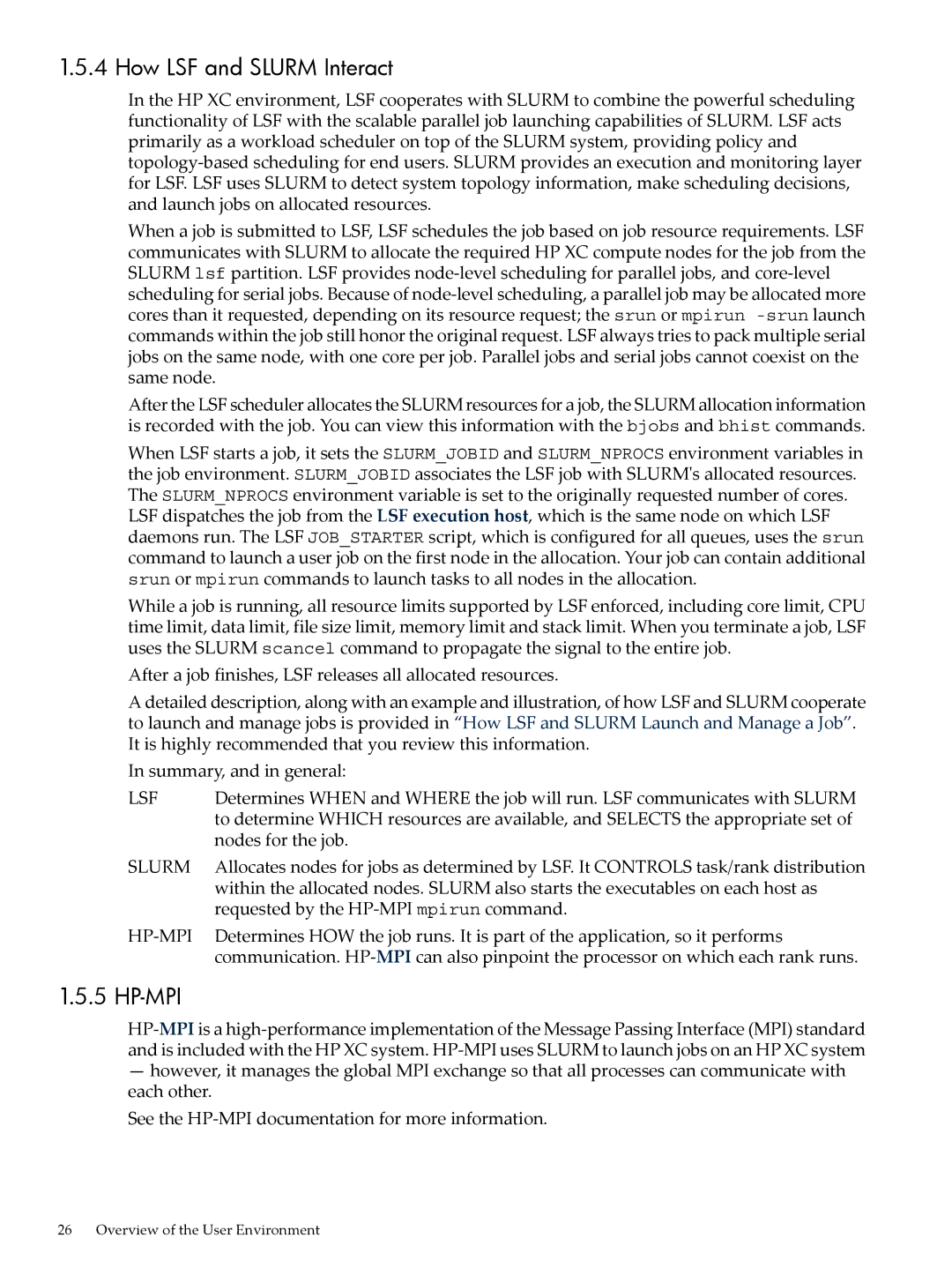1.5.4 How LSF and SLURM Interact
In the HP XC environment, LSF cooperates with SLURM to combine the powerful scheduling functionality of LSF with the scalable parallel job launching capabilities of SLURM. LSF acts primarily as a workload scheduler on top of the SLURM system, providing policy and
When a job is submitted to LSF, LSF schedules the job based on job resource requirements. LSF communicates with SLURM to allocate the required HP XC compute nodes for the job from the SLURM lsf partition. LSF provides
After the LSF scheduler allocates the SLURM resources for a job, the SLURM allocation information is recorded with the job. You can view this information with the bjobs and bhist commands.
When LSF starts a job, it sets the SLURM_JOBID and SLURM_NPROCS environment variables in the job environment. SLURM_JOBID associates the LSF job with SLURM's allocated resources. The SLURM_NPROCS environment variable is set to the originally requested number of cores.
LSF dispatches the job from the LSF execution host, which is the same node on which LSF daemons run. The LSF JOB_STARTER script, which is configured for all queues, uses the srun command to launch a user job on the first node in the allocation. Your job can contain additional srun or mpirun commands to launch tasks to all nodes in the allocation.
While a job is running, all resource limits supported by LSF enforced, including core limit, CPU time limit, data limit, file size limit, memory limit and stack limit. When you terminate a job, LSF uses the SLURM scancel command to propagate the signal to the entire job.
After a job finishes, LSF releases all allocated resources.
A detailed description, along with an example and illustration, of how LSF and SLURM cooperate to launch and manage jobs is provided in “How LSF and SLURM Launch and Manage a Job”. It is highly recommended that you review this information.
In summary, and in general:
LSF | Determines WHEN and WHERE the job will run. LSF communicates with SLURM |
| to determine WHICH resources are available, and SELECTS the appropriate set of |
| nodes for the job. |
SLURM | Allocates nodes for jobs as determined by LSF. It CONTROLS task/rank distribution |
| within the allocated nodes. SLURM also starts the executables on each host as |
| requested by the |
| Determines HOW the job runs. It is part of the application, so it performs |
| communication. |
1.5.5 HP-MPI
—however, it manages the global MPI exchange so that all processes can communicate with each other.
See the
26 Overview of the User Environment
